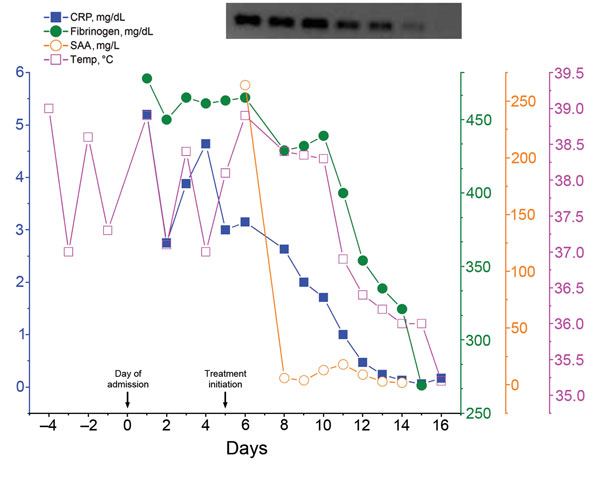Volume 22, Number 2—February 2016
Dispatch
Anaplasmataceae-Specific PCR for Diagnosis and Therapeutic Guidance for Symptomatic Neoehrlichiosis in Immunocompetent Host
Figure 2

Figure 2. Body temperature and markers of inflammation over the course of hospitalization for a patient with Candidatus Neoehrlichia infection, Austria, 2013. Day 0 indicates time of admission. Antimicrobial therapy with doxycycline (300 mg per day) was begun on day 5 and led to a rapid resolution of clinical symptoms and a progressive decrease of all inflammatory parameters. Daily Anaplasmataceae-specific PCR measurements guided therapy, which was safely stopped 1 day after disappearance of serum Candidatus Neoehrlichia DNA. Upper right shows 1.5% agarose gel electrophoresis analysis. The intensity of the 345-bp DNA band amplified from blood samples progressively decreased over the course of treatment. CRP, C-reactive protein; SAA, serum amyloid A; Temp, tympanic temperature.